Maintaining correct tire inflation pressure is very important since it helps optimize tire performance and fuel economy while over-inflated tires are just as problematic as under-inflated ones.
In fact, driving with under-inflated tires is one of the biggest causes of tire failure, according to the National Highway Traffic Safety Administration.
Besides, under-inflated tires can cause many other problems such as wearing out more rapidly, handling poorly and reducing fuel efficiency.
In addition, over-inflated tires are more susceptible to damage from road irregularities, and this also creates a bumpier ride.
Overfilling your tires is just as dangerous as under-filling them, so it’s important you know what is recommended for your vehicle.
This article will give you everything that you need know about your recommended tire pressure. These include:
Buy Pressure Gauge at Amazon
Recommended tire pressure, where to find it?Since tire pressure is so important to your safety and your car’s overall performance, it is important to know which level of tire pressure is right for your vehicle.
In fact, how much air pressure your tires need depends on several factors, including the type of vehicle, the type of tire and the intended use of the vehicle etc.
Air pressure in tires is measured in pounds per square inch or PSI. You can find your tire pressure both inside your car and on the sidewall of the tire.
How to find recommended tire pressure inside your carYou could find the manufacturer’s optimum or recommended tire pressure for your car on a sticker in the door jam, or in your owner’s manual. Some car models even place the stickers on the trunk lid, in the console or on the fuel door. For best results, look for a placard on the inside of the driver’s door, like the example in the photo below.
How to find maximum tire pressure on the sidewall of your tiresSomewhere on the sidewall of your tire, just below the big, bold letters of the manufacturer, for example, you might have noticed the words ‘Max. Press. 35 PSI.’ (pounds per square inch).
Press. 35 PSI.’ (pounds per square inch).
That number tells you the maximum cold pressure needed for your tire to carry its maximum load.
Most typical tires require about 32 to 35 pounds per square inch (PSI) of air, says Rod Tate, owner of highly rated Colony One Auto Center in Stafford, Texas.
Large trucks require much larger tires with PSIs of 50 to 60. Heavy-duty vehicles can go even higher. For example, tire in the picture below requires 41 pounds per square inch of air.
However, the tire’s maximum pressure is NOT necessarily the most suitable pressure for every vehicle upon which the tire can be used (almost all vehicle manufacturers’ recommended tire inflation pressures are less than the tires’ maximum pressure).
You really should follow the recommended pressure printed somewhere inside your car or in the manual rather than the maximum pressure. In the next section, I will explain why.
Buy Pressure Gauge at Amazon
Why is maximum tire pressure not the best?If you insist on inflating your tires to the max PSI, there will be more likely that two things below will happen
Since tires inflated to the max cannot give as much on the sidewall, you might see superior cornering, but it could be at the risk of your braking threshold. One quick corner and your back end could slide out.
One quick corner and your back end could slide out.
When your tires are inflated too much, the rubber rounds out at the top of the tire when you are driving, and the center will quickly wear out. You will also reduce your traction and you could even cause a blowout.
Therefore, maximum pressure is not the best, rather, recommended pressure is. I need to repeat here that the pressure listed on the sidewall is a maximum pressure only, but not a recommended pressure. Instead, you should use the air pressure recommended in the vehicle’s owner’s manual or tire information placard label.
How to check your tires pressure?Therefore, maximum pressure is not the best, rather, recommended pressure is. I need to repeat here that the pressure listed on the sidewall is a maximum pressure only, but not a recommended pressure. Instead, you should use the air pressure recommended in the vehicle’s owner’s manual or tire information placard label.
Instead, you should use the air pressure recommended in the vehicle’s owner’s manual or tire information placard label.
After knowing the most appropriate pressure for your car tires, you should check whether your tires have such pressure. In addition, checking the pressure of your tires regularly is one of the most important – and most often overlooked – regular maintenance that you should do to ensure your safety and quality of your driving. Monitoring the amount of air in your tires will let you know if you have a small leak and can help you avoid an unexpected flat tire.
Frequently checking your PSI becomes even more important in the fall and winter, when outside temperatures drop and weather conditions fluctuate causing your tires to lose air more quickly. Generally speaking, your tire will gain or lose one PSI for every 10-degree change in temperature, which means if you have a sudden drop of 30 degrees, you could lose three PSI overnight. If your tires were already low, this could cause tire damage, steering problems or even a flat tire.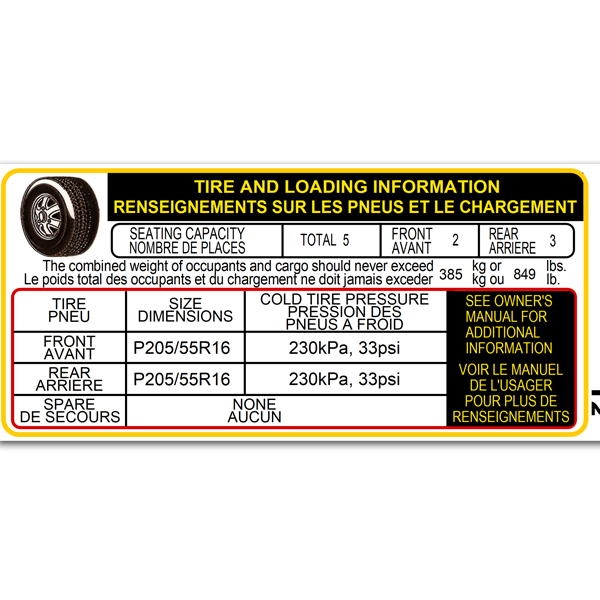
Some experts recommend that you should check the air pressure every time you refuel; others say once a month is sufficient.
How to check tire pressure properly? Checking tire pressure is easy. You can do it right at home or at the gas station. Just be sure you check the pressure when your tires are cold, or have not been driven in several hours. This will give you the most accurate reading.
The most important piece of equipment you need is an accurate tire pressure gauge. You can find battery-operated digital gauges, or more traditional stick-type gauge found at most gas stations. A good gauge should not set you back more than $15 – a worthwhile investment for a longer life for your tires.
Buy Pressure Gauge at Amazon
Make sure you have your manufacturer’s PSI handy when you are checking your tire pressure, and then follow these steps:
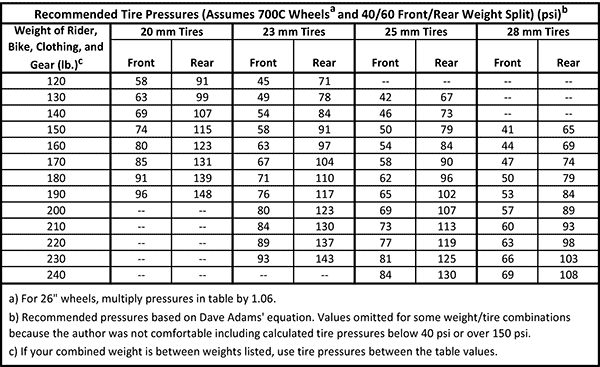
By checking tire pressure once a month, you will get a good idea how they are performing. If your tires are fairly new and continue to leak air, you should consult your dealer or mechanic. You may have a faulty valve or other damage that is difficult to detect which could unfortunately result in the need to replace the tires completely.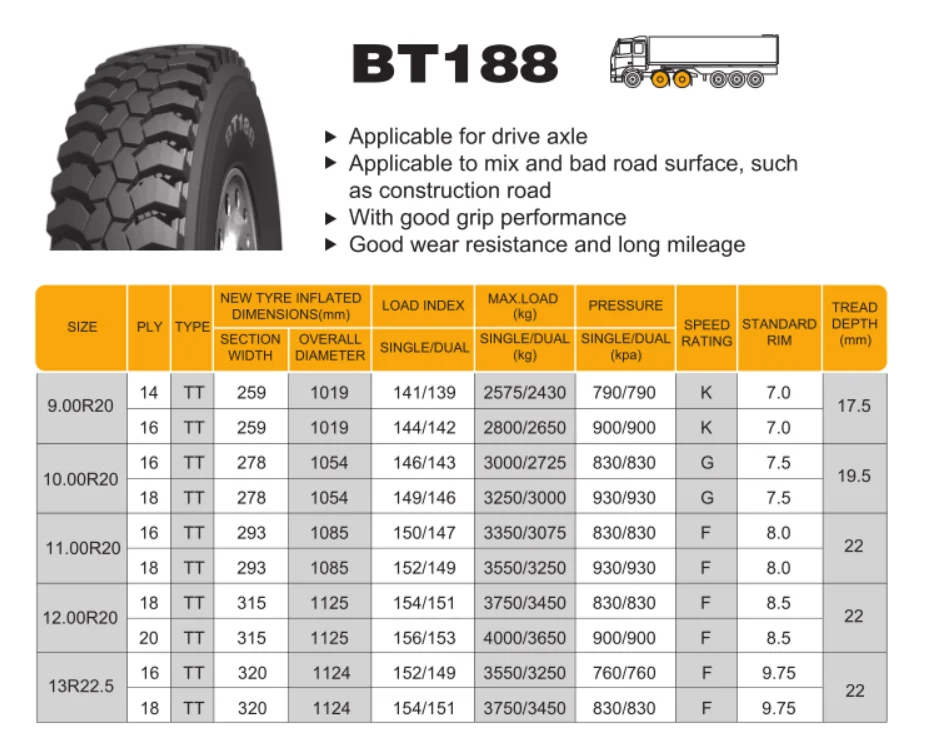 But with proactive maintenance, you could catch an issue before it becomes a problem, and just end up needing a small repair.
But with proactive maintenance, you could catch an issue before it becomes a problem, and just end up needing a small repair.
Often, it is hard to spot an under-inflated tire until it is too late – in other words, it is completely flat. Of course, you could carry a gauge around at all times to measure the pressure, but that is not exactly convenient. Instead, watch for these signs and symptoms of tires that are under-inflated.
When your tires are under-inflated, your ride can be less smooth than usual. You may even find that it takes longer to brake.
When a tire is not inflated properly, it wears down more quickly. If you notice that one or all of your tires are wearing out faster than usual, it may be because they are under-inflated.
Tires that are under-inflated can make your vehicle quiver and shake, which is not a pleasant driving experience. Under-inflation can even cause tires to become misaligned, with comes with it is own variety of problems.
Under-inflation can even cause tires to become misaligned, with comes with it is own variety of problems.
These are all things that you need to know about recommended pressures of your car tires. After reading this article, you will never confuse about the right pressure of your tires and will know how to check it.
Please share your ideas with me if you have other tips for this.
Alvin Reyes
Alvin Reyes has expertise in automotive evaluation. He collaborated with famous newspapers and is still making efforts in tire review for DrivingPress.com
When it comes to driving safety, tire pressure is always one of the hottest topics. Why does tire pressure matter? What the heck is that little annoying symbol on my dashboard? Should I under-inflate my tire during the winter? How often should I check my tire pressure?
We got tons of questions like this from our community, so for today, let's dive deep into the world of tire pressure, put our geeky glasses on and figure out everything you need to know about your tires.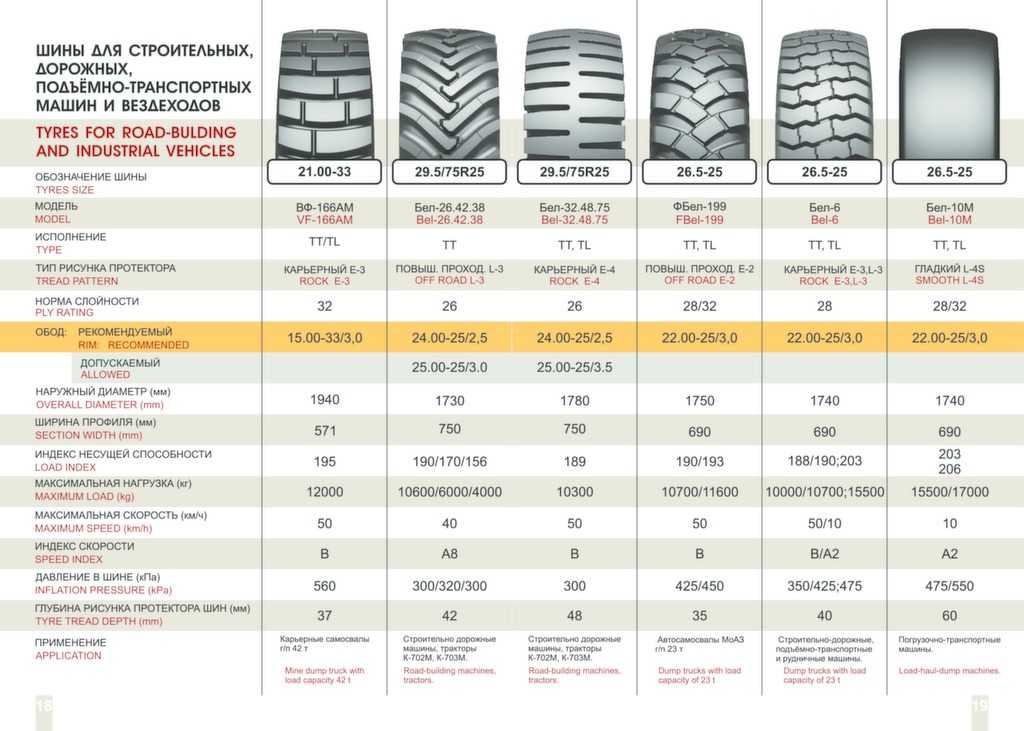
1. What's The Recommended Tire Pressure For My Car?
The recommended tire pressure varies based on the vehicle makes determined by the manufacturer after thousands of tests and calculations. For most vehicles, you can find the ideal tire pressure on the sticker/card inside the driver’s door for newer cars. If there’s no sticker, you can usually find the info in the owner’s manual. Normal tire pressure is usually between 32~40 psi(pounds per square inch) when they are cold. So make sure you check your tire pressure after a long stay and usually, you can do it in the early morning.
2. How To Check The Tire Pressure?
After knowing the proper tire pressure of your vehicle recommended by the manufacturer, you should check your tire pressure regularly to make sure that you are in good shape.
You can check your tire pressure in auto part stores, the mechanics, gas stations, and at home. To check tire pressure at home, you need:
As tire pressure changes with the temperature a lot, and recommended tire pressures are cold inflation pressure, you should start with cold tires if possible.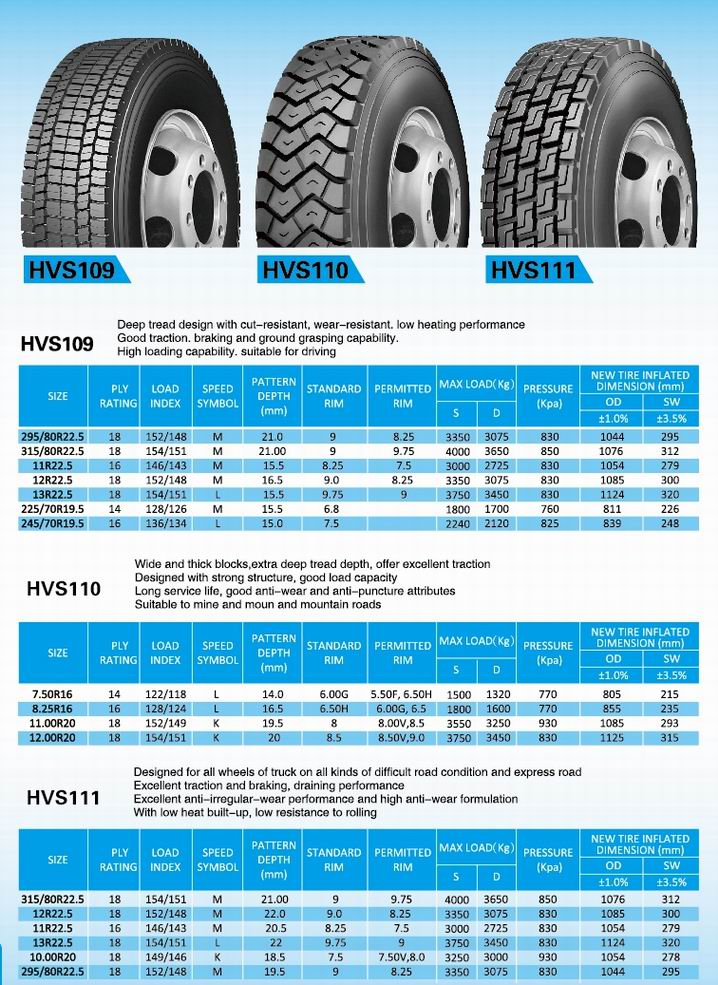 We mostly check the tire pressure after one night's rest to avoid the heat from the friction of the last drive, and before the temperature goes up.
We mostly check the tire pressure after one night's rest to avoid the heat from the friction of the last drive, and before the temperature goes up.
Unscrew the valve cap and press the tire gauge onto the valve stem hard enough until the hissing sound disappears. There should be a reading as long as the gauge is well connected to the tire.
You can then note down the tire pressure of each tire, and compare them with the ideal psi you read from inside your driver’s door or in the owner’s manual. Make sure you read in detail, as for some vehicles, front and rear tires have different recommended psi.
If you find a tire underinflated, use the air compressor to fill your tires. You can either buy an air compressor in the auto parts store or use one in a gas station. Remember to rest your tires for at least half an hour to make sure they’re cold and the reading is accurate.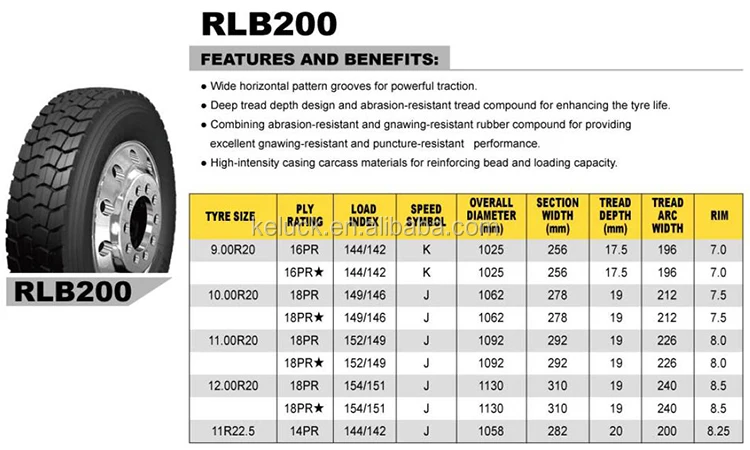 If you have to fill your tires when the tires are hot, inflate them 3~4 psi above the recommended psi, and check again with your gauge when they are cold. It’s ok to overinflate a bit when filling the tires, as you can let the air out with the gauge.
If you have to fill your tires when the tires are hot, inflate them 3~4 psi above the recommended psi, and check again with your gauge when they are cold. It’s ok to overinflate a bit when filling the tires, as you can let the air out with the gauge.
After filling the tires, use your tire pressure gauge to check the tire pressure again and make sure they are in a good range. Let the air out a bit if they are over-inflated by pressing the gauge harder on the valve stem.
3. How To Maintain Proper Tire Inflation?
Tire maintenance is essential for the overall performance of your vehicle, and we highly recommend that you check your tire pressure every time you inflate your tire, each 10°F (5.6 °C) temperature change, and every 30 days.
Be mindful that don’t wait until the TPMS(Tire Pressure Monitoring System) light come on before you check the tire pressure, as the normal TPMS may:
 ..
..For more information about the tire pressure monitoring system, please check our post about TPMS: What is TPMS and Why Does it Matter?
Thus, we highly recommend that you check your tire pressure regularly, especially before a long drive or heavy load driving. Also, temperature affects the tire pressure a lot, and we will explain it in the next section.
4. How Does Temperature Affect Tire Pressure?
First of all, the rule of thumb is for each 10°F (5.6 °C) decrease in temperature, the tire pressure will drop by one psi for most passenger vehicles. When it comes to commercial truck tires, which are often inflated to over 80 psi (twice as much as a passenger vehicle tires), the change of tire pressure according to temperature is doubled to 2 psi for every 10°F.
For the non-nerdy readers, just remember this rule of thumb and keep in mind that you will need to monitor your tire pressure during different seasons or a sudden temperature change.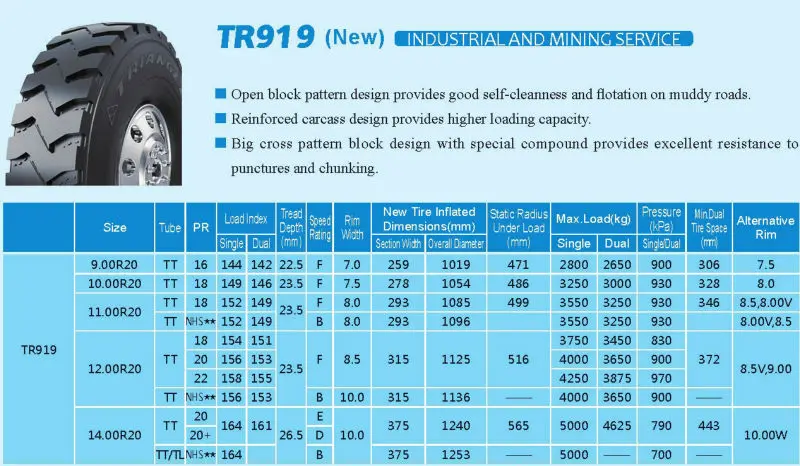 For those who want a deeper dive into how psi's are determined, here's the science behind it.
For those who want a deeper dive into how psi's are determined, here's the science behind it.
The equation we use to calculate the relationship between tire pressure and the temperature is called the Ideal Gas Law. It is a good approximation of the behavior of many gases under many conditions. (Appx1) It works well for most low-pressure gases. When applied to tire pressure calculation, the error is less than 1%.
First, we take the Ideal Gas Law equation and apply it to our circumstance:
where,
P = absolute pressure
V = gas volume in the tire
n = the number of molecules of gas in the tire
R = universal gas constant
T = temperature
Since we are trying to examine the pressure change according to the temperature, let's assume two tire pressures P1 & P2 at their set temperatures T1 & T2.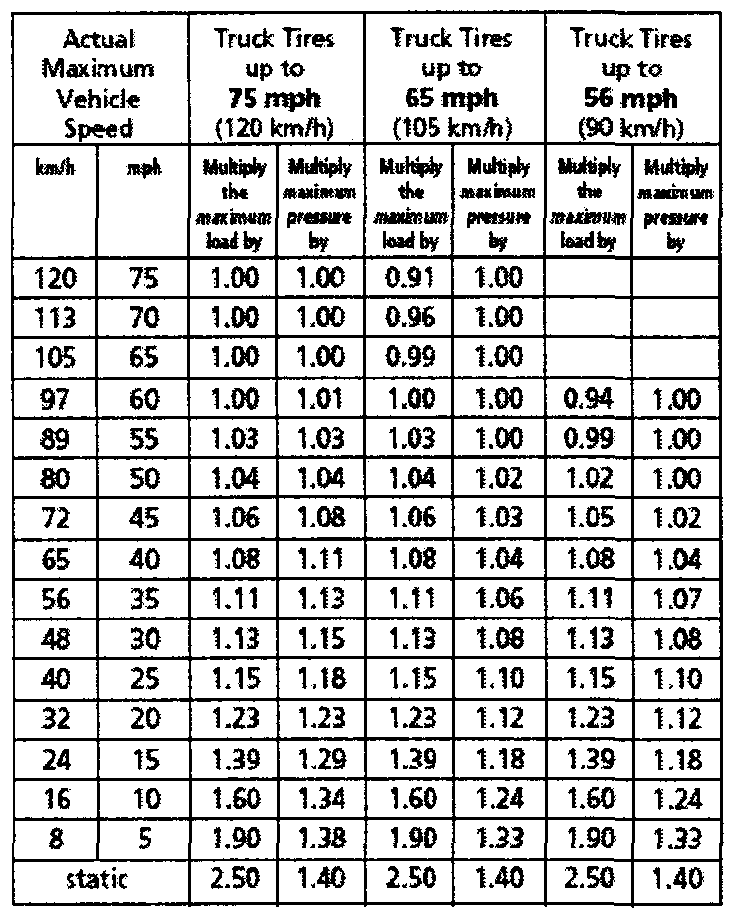
Given the n and R are both constants, and the gas volume in the tire is also a constant, we can take those constants out of the equation, and suddenly we get this straightforward one:
Let's say the temperature drops from 100°F to 50°F, the tire pressure at 100°F is 35 psi, so what's the tire pressure now at 50°F?
(the metric system is getting in the way, huh?)
Absolute Pressure = tire pressure + sea level air pressure (14.7 psi). So,
Put all that into the equation,
So a 50°F drop in temperature lowers the air pressure by 4.5 psi, which is pretty much the same according to our rule of thumb.
5. How Does Tire Pressure Affect Driving
Both overinflation and underinflation affect your tire performance a lot, and serious problems might occur. According to NHTSA(National Highway Traffic Safety Administration), driving on underinflated tires increases a driver's chance of being in a serious accident by 300%. So how will a bad tire pressure affect driving safety? We will explain in detail below.
So how will a bad tire pressure affect driving safety? We will explain in detail below.
The grip is mostly associated with the size of the contact patch between the tire and the road. An over-inflated tire radically decreases the contact patch while an under-inflated tire does the opposite.
A larger contact patch gives you more grip, and this is the exact reason why lots of racers will intentionally decrease their tire pressures to create a larger contact patch on a dry race track.
However, despite the fact that an under-inflated tire will cause more fuel consumption and improper tear and wear of the tires, for most daily commuters, it might cause an even scarier problem, which is hydroplaning.
Hydroplaning is a hazardous event when a layer of water builds between the wheels and the road surface, leading to a loss of traction that prevents the vehicle from responding to control inputs. (Appx2)
Hydroplaning occurs when the pressure of the tire pushing on the ground is equal to the water pushing back up on that tire. The size of the contact patch, given the force or the weight of the tire, is the same, directly affects the average pressure the tire's putting down on the road. The larger the contact patch (by deflating the tires), the less pressure it puts on that same area. So there's a causal relationship between your tire pressure and the possibility of a hydroplaning event.
The size of the contact patch, given the force or the weight of the tire, is the same, directly affects the average pressure the tire's putting down on the road. The larger the contact patch (by deflating the tires), the less pressure it puts on that same area. So there's a causal relationship between your tire pressure and the possibility of a hydroplaning event.
Here's a more visual explanation of what is happening between a properly-inflated tire and an underinflated tire when driving on a wet road.
To avoid a hydroplaning event, ALWAYS inflate your tires properly. Also, check your tires' treads, which make the water flow around the tires more efficiently, and of course, driving slow is always a big plus.
How tire pressure affects tire wearThe contact patch directly decides the pattern of the tire's wear and tear. You don't want your tires to wear out prematurely just because you have an over or under-inflated tire.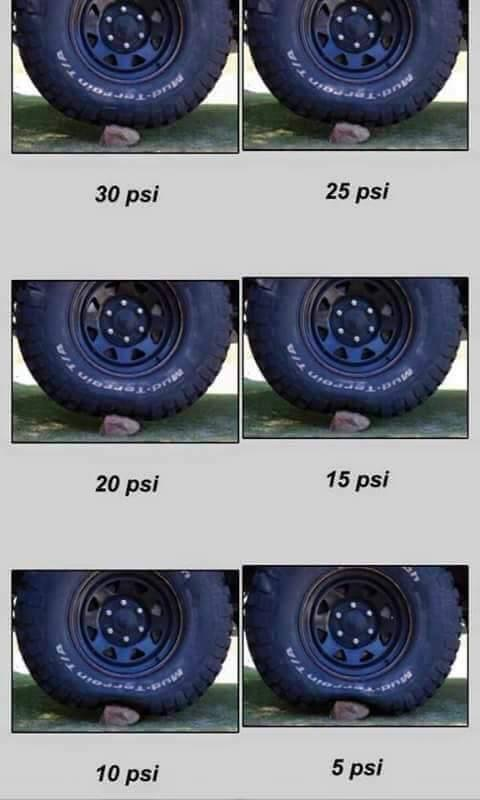
Imagine you are a ball rolling on the ice, there's no friction between the two surfaces, how much extra force do you need to apply to keep the ball moving? Zero (Thanks, Newton). The same applies to your fuel consumption when it comes to driving on the road. The rolling resistance between your tires and the road significantly affects fuel economy, and by now we should all know the logic behind this, lower tire pressure leads to a larger contact patch, which causes higher rolling resistance, and thus, poor fuel economy.
A Michelin study showed that your tire is accountable for at least 1/5 of your total fuel consumption and a 1-bar of pressure drop (14.5 psi) would increase your fuel consumption by 3-5%.
6. Special Conditions For Tire Pressure Manipulation
There are of course circumstances where you want to manipulate your tire pressure to meet specific requirements.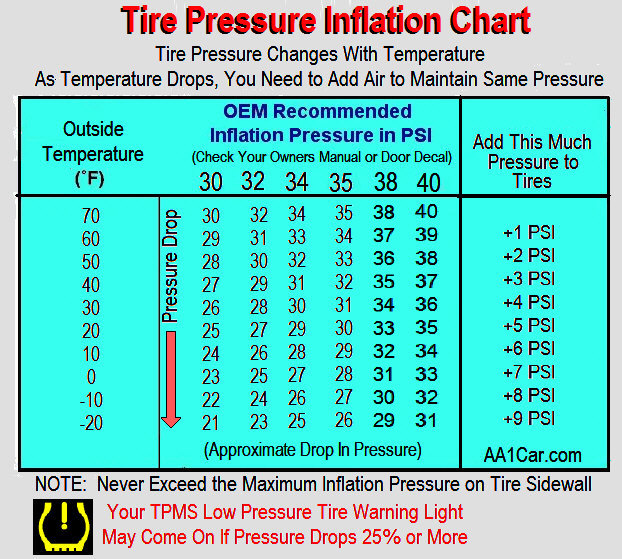 Like the aforementioned track race, or if you are driving on sand, mud, etc. However, as a daily commuter, we strongly suggest you regularly check your tire pressure, preferably once a week and anytime you might take a long road trip, and always keep the tires properly inflated!
Like the aforementioned track race, or if you are driving on sand, mud, etc. However, as a daily commuter, we strongly suggest you regularly check your tire pressure, preferably once a week and anytime you might take a long road trip, and always keep the tires properly inflated!
Conclusion
Tire pressure is always a hot topic regarding driving safety, and it's important to keep an eye on the tire pressure to maximize fuel efficiency and safety.
Before you go
We'd like to offer you our most popular ZUS Smart Vehicle Health Monitor for FREE to better take care of your car and save $$$ on car expenses. Claim your free unit here.
Top Posts from nonda:
What is a Car Diagnostic Test & How to DIY?
What Does Check Engine Light Mean & How to Fix it?
Best OBD2 Scanner & Code Reader: Complete Buying Guide
OBD2 Codes: What You Need to Know
Appendix 1 - Ideal gas law - Wikipedia.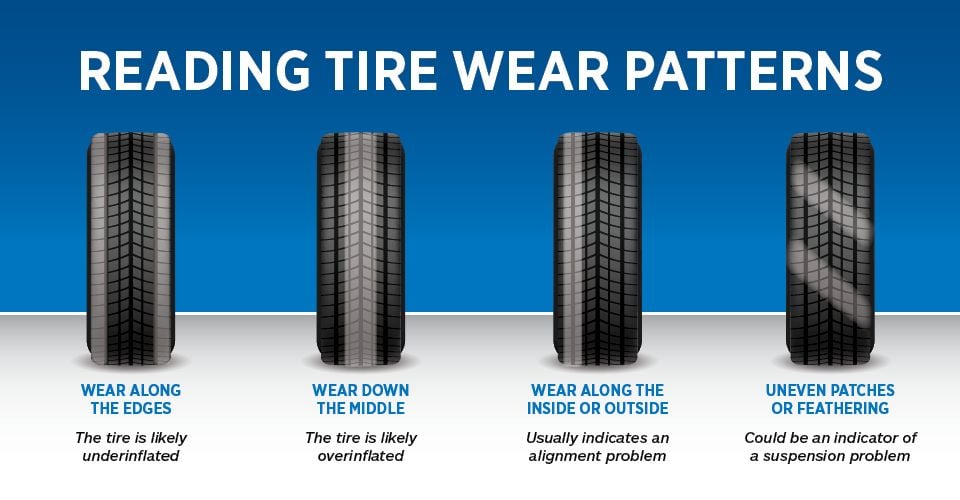
Appendix 2 - Aquaplaning - Wikipedia.
I want to know what is the lowest tire pressure you could put on a top speed 44psi tire? I run these tires at 33-34 psi. inch for about half a year now, will it damage my tires? I plan to install 36 psi. inch to make it close to the nominal maximum limit.
marchemike
2014-05-20 19:53:58 +0000
Tire pressure is usually determined by vehicle weight and tire type. In other words, 44 psi. in. (44 psi) is the maximum tire pressure at its maximum load.
You can safely inflate tires to maximum pressure, but this may not provide the best ride or performance. Each vehicle has a specified pressure/load rating on a plate located in the jamming area of the doors. It might look like this;
Since you didn't give us information about the type of tire or vehicle, I will say that you should use 10% to 15% pressure at the maximum psi setting to get the best ride or tire performance.
This is just a guess and you will have to do some research on your own depending on the tire brand and vehicle type.
SourceCharlieRB
2019-01-31 22:58:03 +0000
Tire pressure should only be appropriate for vehicle weight/ground area per tire/4 tyres. However, cornering can increase tire inertial mass and increase friction wear and life.
Inflation is thus a compromise between gentle shock absorption and long-term comfort. Using the recommended pressure can optimize service life. But not comfort, but the number of passengers + luggage can make a difference.
Optimum tire pressure depends on how you ride corners and absorb bumps that cause rim damage, not highway comfort and vibrations.
SourceTony Stewart Sunnyskyguy EE75
2018-10-13 16:51:17 +0000
38psi seems to be perfect for a tire with 44psi max cold.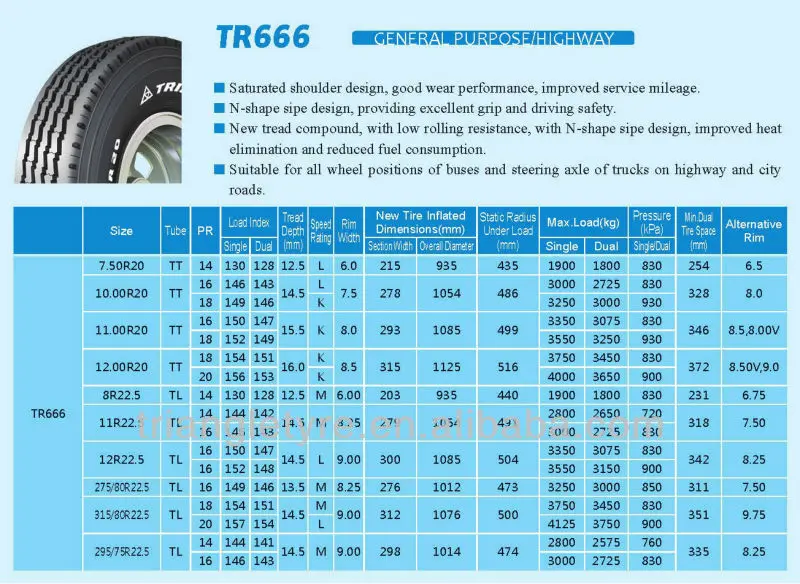 It is recommended to check between winter and summer. Technically, you should check every month, but how many of us do this. My truck, which has a tire rating at 80psi cold, seems to do best in the 50-60psi range. When you start getting around 7 70-80psi you are in for a pretty tough ride. It can also add unnecessary stress to the shocks/bars and general suspension components. Note: If you tend to haul heavy loads, you may want to be a little higher in FPS. inch but never exceed the maximum cold figure and remember to check when the car is idle like at night and check before the sun can affect anything.
It is recommended to check between winter and summer. Technically, you should check every month, but how many of us do this. My truck, which has a tire rating at 80psi cold, seems to do best in the 50-60psi range. When you start getting around 7 70-80psi you are in for a pretty tough ride. It can also add unnecessary stress to the shocks/bars and general suspension components. Note: If you tend to haul heavy loads, you may want to be a little higher in FPS. inch but never exceed the maximum cold figure and remember to check when the car is idle like at night and check before the sun can affect anything.
Chelsea
2017-08-31 23:39:52 +0000
I ran 38 psi when I was rated at 44 psi. When they warmed up, they were at 40 psi. They were perfectly dressed. Got 64,000 of them. They were a little over 5 years old.
Source Ralph Hitchens Jr.
2019-01-31 18:38:45 +0000
I have a 2011 vagrant synthesis. The tires have a maximum sidewall pressure of 44 psi. inch, and the sticker on the door is 31 psi. inch. A big difference! At 60,000 miles, the tread on the outside is next to the wear indicators, and the tread in the middle is probably only halfway down. When I look up why tires wear so much, I find it is usually due to insufficient ventilation. Getting ready to get new tires and will definitely keep them close to 40 psi. inch.
SourceMike C
2019-08-06 18:17:26 +0000
The door will be the original tire that came with the car if you put the original tires they call back when you need new ones. you will probably keep the same specs when you change tire brands and different sizes, the manufacturer will give you the specs for this tire, and the safety of this tire, I always go to buy tire specs, check the tire sidewall pressure by them, you can still call the tire factory that makes this brand of tire that would be better than everyone here, just guessing.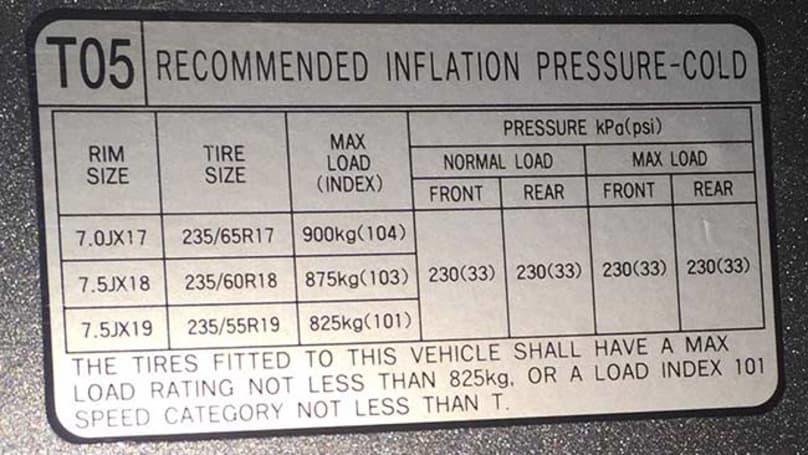
Todd Miller
2019-07-03 16:49:35 +0000
Many older vehicles came with tires up to 35 psi installed. inch. You won't find another tire with this one anymore. They start at 44 and go up to 65, so put an initial pressure of 35 psi. an inch into one designed for 44 is dangerously low. 10-15% below max pressure is a good start, then adjust down for a comfortable ride versus fuel economy. It will always be a compromise. If they are fraying on the outside then they are either not inflated or you are doing a lot of high speed turns.
SourceDon Brown
Tire pressure monitoring system
TPMS (Tire Pressure Monitoring System)
iTPMS system
direct TPMS system
Tire pressure warning reset switch
· To initialize the system, you need to . ..
..
Primary system check
Caps have windows...
Indirect tire pressure monitoring system
Recently, more and more often in my work I have to deal with customer questions: “... what kind of light is on the dashboard, please turn it off”, Fig. 1:
And this is not surprising, because in the US automotive market, TPMS has been introduced since 1999, and since 2008 it has become a mandatory basic equipment system for all cars and light trucks sold in America. More than 600 people died on American roads in 2011 due to inadequate tire pressure, according to the US National Highway Traffic Safety Administration (NHTSA). Since 2006, this option has become more and more widely available on cars produced for Europe.
As practice shows, used cars from America are cheaper for a Russian buyer than a car of the same class from Europe, and Russians are happy to buy Japanese Toyotas, Lexuses, Mazdas or Hondas brought from North America.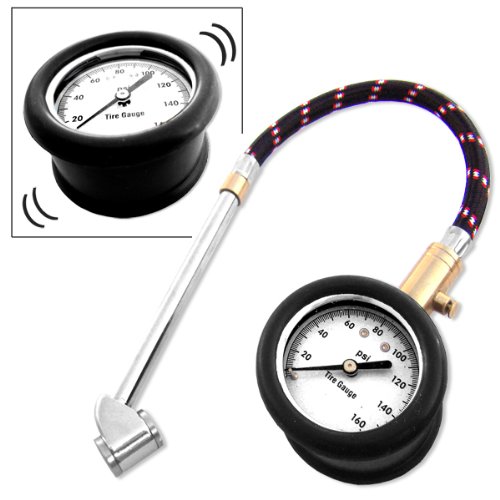 And here many owners of these cars are waiting for the first not very pleasant surprise. As a rule, transportation by sea goes in containers and often the wheels are removed from the cars, storing them separately, the batteries are turned off, at the request of future owners in America they change the wheels to “beautiful” ones and no one thinks that upon arrival in Russia it is necessary to restore normal operation of the TPMS system. As a result, having registered the car, its operation begins with a visit to a car service and additional financial expenses, for which most owners are simply not mentally prepared.
And here many owners of these cars are waiting for the first not very pleasant surprise. As a rule, transportation by sea goes in containers and often the wheels are removed from the cars, storing them separately, the batteries are turned off, at the request of future owners in America they change the wheels to “beautiful” ones and no one thinks that upon arrival in Russia it is necessary to restore normal operation of the TPMS system. As a result, having registered the car, its operation begins with a visit to a car service and additional financial expenses, for which most owners are simply not mentally prepared.
The most recent recent example from my practice is a 2008 Lexus IS250 4GRFSE. The car is in perfect condition, black metallic, white leather interior, complete set and new wheels, which were installed before being sent to Russia at the request of the future hostess ... but it never occurred to anyone that it was necessary to prescribe sensors. The Americans, apparently, are indifferent, and the hostess could not even imagine such a problem.
Removal / installation of wheels, mounting / dismantling of tires to rewrite sensor numbers, balancing 4 wheels, registration of four sensors and it's still good that all the sensors were in place and working, and if not, then cash injections into the car are significant would have increased, Fig. 2:
So what is the TPMS tire pressure monitoring system, which has another name TPWS (Tire Pressure Warning System). What prompted auto manufacturers to implement this system in their cars?
First of all, it is road safety and the fight for the environment. But what about car owners, for additional safety they bear additional costs for use and maintenance? Not only. There are also more pleasant moments in it, in addition to increased safety, there is also a general reduction in the cost of operating a car. According to studies conducted in the United States, it was found that the life of car tires decreases in direct proportion to insufficient pressure.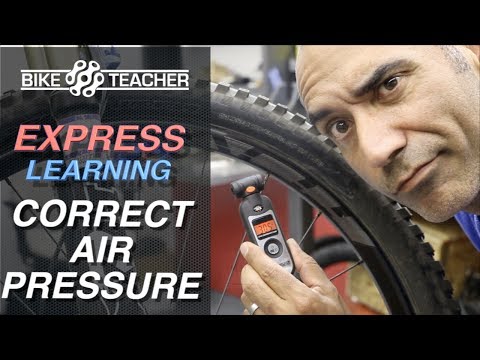 A tire that should have a standard pressure of 32psi has a life of 80,000 miles if the pressure drops to 29psi then subtract 8,000 miles, up to 26 psi minus 16,000 miles, and up to 22 psi, then minus 24,000 miles or more than 25%. Of course, all these numbers are correct, provided that the rims are unblemished and the wheels are properly balanced.
A tire that should have a standard pressure of 32psi has a life of 80,000 miles if the pressure drops to 29psi then subtract 8,000 miles, up to 26 psi minus 16,000 miles, and up to 22 psi, then minus 24,000 miles or more than 25%. Of course, all these numbers are correct, provided that the rims are unblemished and the wheels are properly balanced.
Initially, some car manufacturers began to include tire pressure monitoring in the ABS system. This is a fairly simple and low-cost method for solving this problem, but it has some limitations. Such a system is called “indirect” Indirect TPMS, its advantage is low cost, already installed sensors and blocks are used, there are also disadvantages, such as a significant measurement error and some others, although NIRA Dynamics AB and Dunlop Tech GmbH promoting iTPMS in the European market have several a different point of view, but more on that at the end of the article.
In general, the American auto industry was a pioneer in the implementation of this system. But on most North American iTPMS systems (1999 to 2003 vehicles), the system cannot detect pressure leaks if two tires on the same axle or all four wheels have the same pressure loss. The principle of operation of the iTPMS system is as follows, when the tire pressure changes, the circumference of the wheel also changes, respectively, the wheel speed changes, which is recorded by the ABS system speed sensor and when the permissible limits are exceeded, the warning lamp lights up. In most cases, in order for the speed sensor to record the difference in wheel speed, the pressure loss should be somewhere between 0.55 - 0.95 bar. It depends on the type, diameter and proportion of tires, as well as the sensitivity of the ABS system. On low-profile tires with hard sidewalls, the diameter will change less than on standard tires with high proportions and softer sidewalls. A loss of 0.7 bar on a low profile tire can change the diameter by less than 1mm, and most ABS systems cannot detect a change in RPM with a diameter reduction of less than 1mm.
But on most North American iTPMS systems (1999 to 2003 vehicles), the system cannot detect pressure leaks if two tires on the same axle or all four wheels have the same pressure loss. The principle of operation of the iTPMS system is as follows, when the tire pressure changes, the circumference of the wheel also changes, respectively, the wheel speed changes, which is recorded by the ABS system speed sensor and when the permissible limits are exceeded, the warning lamp lights up. In most cases, in order for the speed sensor to record the difference in wheel speed, the pressure loss should be somewhere between 0.55 - 0.95 bar. It depends on the type, diameter and proportion of tires, as well as the sensitivity of the ABS system. On low-profile tires with hard sidewalls, the diameter will change less than on standard tires with high proportions and softer sidewalls. A loss of 0.7 bar on a low profile tire can change the diameter by less than 1mm, and most ABS systems cannot detect a change in RPM with a diameter reduction of less than 1mm.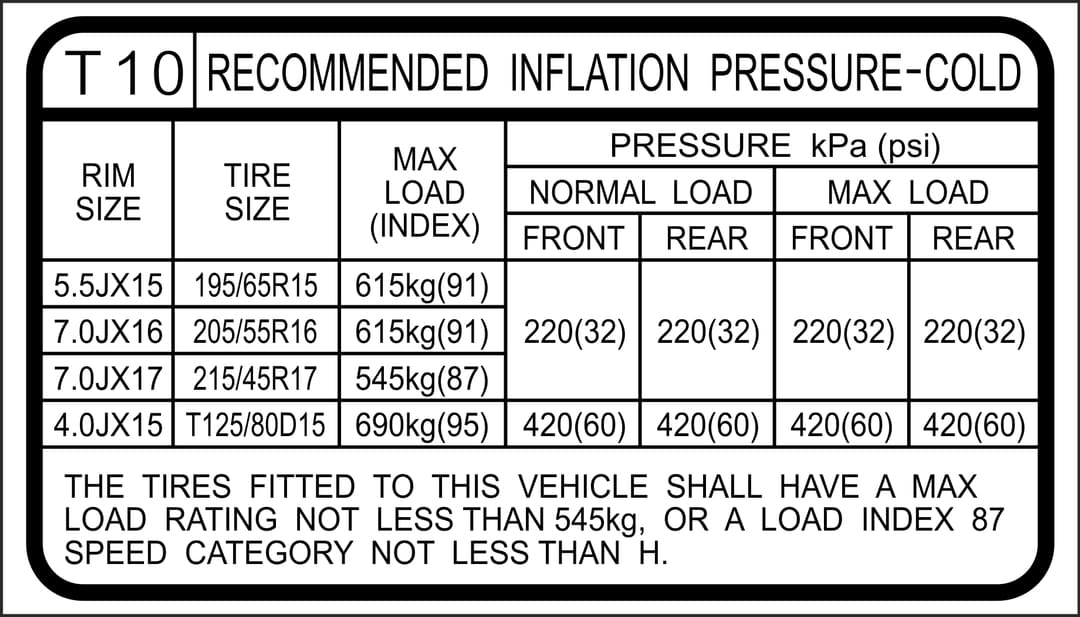 For this reason, iTPMS is not as sensitive as dTPMS, where pressure sensors are located in each wheel.
For this reason, iTPMS is not as sensitive as dTPMS, where pressure sensors are located in each wheel.
Also in the iTPMS system, the calibration of each tire must be carried out, after replacement, repair or balancing. The driver must press the special iTPMS button - "reset" on the instrument panel or follow the adaptation procedure described on the information display. It is important that all tires are properly inflated before the recalibration procedure - otherwise the iTPMS control module will calibrate the wheels incorrectly and may not detect tire pressure loss. Recalibration procedures differ significantly by vehicle manufacturer and year. In America, even a special reference program has been released, the cost of which ranges from $85 to $185 USD. You can order and buy if necessary here - http://www.tireindustry.org/pdf/0908-TPMS-RelearnFlyer_lorez.pdf . The program has all the cars of the American market, regardless of the country of manufacture.
No special procedures other than the calibration described above are required for the iTPMS system. It is only necessary to check the tire pressure before calibration for compliance with the specified one. The system is quite reliable and its failure is possible only in the event of a breakdown in the ABS system.
It is only necessary to check the tire pressure before calibration for compliance with the specified one. The system is quite reliable and its failure is possible only in the event of a breakdown in the ABS system.
Some models of cars of the American market with iTPMS system - 2001-2003 Ford Windstar, 1997-2002 Buick Park Avenue, 1999-2003 Buick Century & Regal, 2002-2003 Buick LeSabre, 2003 Buick Rendezvous & Aztek, 2000-2003 Chevy Impala & Monte Carlo, 1999-2002 Chevy Alero, 1999-2002 Pontiac Grand Am, 1997 - 2003 Pontiac Grand Prix, 2000 - 2003 Pontiac Bonneville, and 2001-2003 Oldsmobile Aurora.
In the direct TPMS system, a separate valve is installed in each wheel with a built-in pressure sensor, optionally with a temperature sensor, transmitter, antenna and a battery that provides power to the electronic components. The valve stem and cap serve as the antenna, so you should not change the original cap for a new plastic one, you can suddenly get an absolutely unnecessary problem and a headache to fix it. On Honda vehicles, when the TPMS ECU is in "learning mode", activating the sensors in sequence tells the TPMS ECU where the wheel is located. The sequence usually starts with the left front wheel, and moves clockwise. Adaptation of the system on some car models may be necessary even after balancing when servicing wheels, dismantling / mounting, changing tires or repairing punctures. But I have not yet met with such people because our car service center has not provided tire fitting services until recently. Before starting the diagnostics and maintenance of this system at Toyota, be sure to write down the IDs of all sensors on a sheet and have it at hand, because in case of registration, even when replacing one sensor, you will have to re-enter the IDs of all sensors. And to register sensors on Honda cars, you only need the HDS dealer program, and with the original Honda HIM or GNA 600 adapter. Also, using a scanner, you can change the threshold for a given tire pressure, naturally notifying the owner about it so that he can control it and in case of arrival for service at another service.
On Honda vehicles, when the TPMS ECU is in "learning mode", activating the sensors in sequence tells the TPMS ECU where the wheel is located. The sequence usually starts with the left front wheel, and moves clockwise. Adaptation of the system on some car models may be necessary even after balancing when servicing wheels, dismantling / mounting, changing tires or repairing punctures. But I have not yet met with such people because our car service center has not provided tire fitting services until recently. Before starting the diagnostics and maintenance of this system at Toyota, be sure to write down the IDs of all sensors on a sheet and have it at hand, because in case of registration, even when replacing one sensor, you will have to re-enter the IDs of all sensors. And to register sensors on Honda cars, you only need the HDS dealer program, and with the original Honda HIM or GNA 600 adapter. Also, using a scanner, you can change the threshold for a given tire pressure, naturally notifying the owner about it so that he can control it and in case of arrival for service at another service. And Honda also has a very handy option for locating the sensor, which makes it much easier to identify it in the presence of a malfunction. Unfortunately, Toyota does not provide such functions in the Techstream program.
And Honda also has a very handy option for locating the sensor, which makes it much easier to identify it in the presence of a malfunction. Unfortunately, Toyota does not provide such functions in the Techstream program.
There is another very important caution when servicing wheels with dTPMS sensors. When a wheel is punctured, in no case should you use an aerosol sealant to repair it. The sealant can interfere with the normal operation of the pressure sensor, distorting the readings or completely incapacitating it. And instead of one problem, you can get another, much more expensive one. Usually on cans with such an aerosol there is always information about the impossibility of its use in cars equipped with a dTPMS system.
iTPMS systems are not sensitive to this problem - photo 3:
Diagnostics and tuning of dTPMS systems can be performed not only by dealer equipment, testers of such well-known brands as ATEQ, Bartec, OTC and many others are available on the secondary market in the USA. The cost of such multi-brand testers fluctuates between a little more or less than $500 USD. The price depends on the coverage of brands, model range and available features. Anyone can purchase this equipment.
The cost of such multi-brand testers fluctuates between a little more or less than $500 USD. The price depends on the coverage of brands, model range and available features. Anyone can purchase this equipment.
The tester, when connected to the dTPMS system, usually activates the pressure sensors in such a way that they begin to broadcast a signal. The dTPMS ECU then checks the functionality of all sensors and their readings. This tool can be used both to check the operation of each individual sensor, register new sensors in the ECU when they are replaced, and to troubleshoot the dTPMS system. Many of these testers have a USB port that allows you to update the software as needed, as well as download information from the tester's memory to a PC for printing or saving.
Let's take a closer look at the dTPMS system using the example of a 2008 Toyota Land Cruiser.
In the figure below, you can trace the relationship of all components of the system, and as you can see, everything is quite simple and understandable - fig.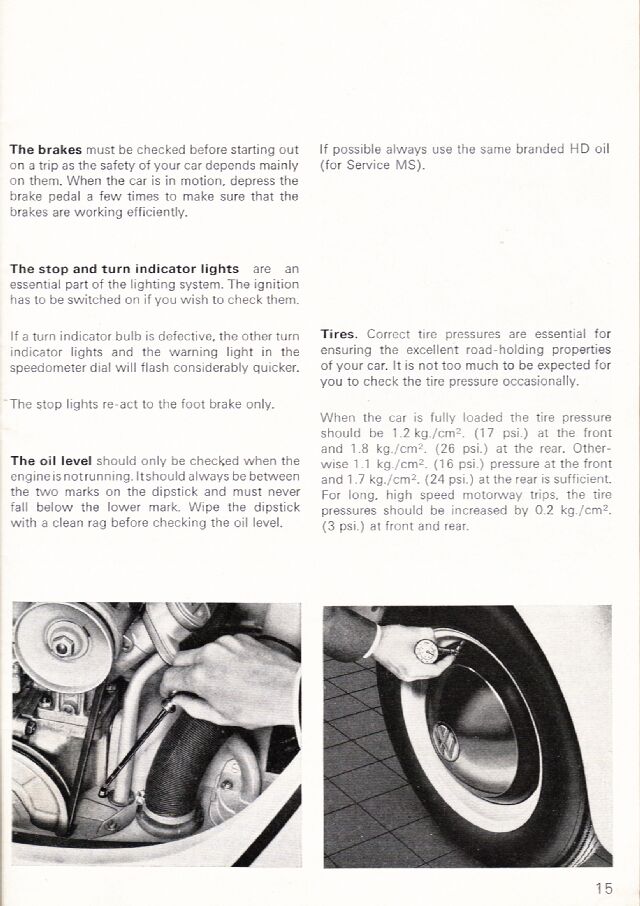 4:
4:
Each wheel on this car, including the spare one, has a valve with a pressure sensor built into it, a transmitter and a battery for autonomous power supply of the sensor, - fig. 5:
The sensor reads pressure readings and data in the form of a radio signal, including the ID of each sensor, and is transmitted to the Tire Pressure ECU via an antenna in a receiver installed on the roof of the car, - fig. 6:
As long as the sensor IDs are registered in the Tire Pressure ECU, the program compares the pressure in all tires, including the spare tire. If the air pressure readings are below a certain threshold set by software in the ECU, the corresponding banner lights up on the panel and warns the driver about this.
Also, if it becomes necessary to reset the system readings and its current initialization, there is a corresponding Tire pressure warning reset switch on the bottom of the dashboard under the steering wheel, - fig. 7:
7:
When the dTPMS system is running, the ECU of the system can operate with programmed data that corresponds to a certain type of tire. Thus, when selling, the dealer must set the warning threshold to an appropriate value in accordance with the rules of the selling market.
Use the reset function only after the air pressure of all tires (including the spare tire) has been corrected for the specific vehicle according to the information from the dealer (230kPa for a 2008 TLC 200).
To initialize the system, press and hold the Tire pressure warning reset switch for 3 or more seconds with the ignition key (IG ON). When the system ECU receives an initialization signal, the warning indicator on the instrument panel flashes 3 times (1 second on, 1 second off).
During the initialization of the system and the tire pressure sensors, the registered signals are transmitted to the ECU at a frequency of once per minute. The initialization process is completed when the signals from all sensors in the tires (including the spare wheel) have been received.
Initial system check
When the driver turns on the vehicle's ignition, the TPMS warning light should come on for 3 seconds and then turn off. If the lamp does not light up, then first of all it is necessary to check the lamp itself and its wiring.
If the lamp lights up and does not go out, then there are problems in the system that need to be identified and eliminated. In the absence of a dealer scanner, first of all, it is necessary to check the pressure in all wheels, including the spare one, and, if necessary, bring it to the required parameters.
For Toyota Land Cruiser 2008, this is (Fig. 8):
If, after adjusting the pressure, the system worked normally and the control lamp went out, but after a while it lit up again, then the most likely cause is an air leak from one of the wheels. And here, of course, the best assistant is a diagnostic scanner with the appropriate functions for monitoring the TPMS system. But of course, this is not the only reason for the warning lamp not going out.
Also possible causes:
- tire pressure is abnormally high, absolute pressure: 600 kPa (6.1 kgf/cm2, 87 psi) or higher, relative pressure: 500 kPa (5.1 kgf/cm2, 73 psi) ) or higher.
- dead battery in the valve installed in the wheel (battery life 10 years).
- devices that use a similar radio frequency are located in the immediate vicinity of the car or are used in the car.
- a tinting film that affects radio signals is pasted on the car windows.
- a large amount of snow or ice has stuck in the wheel arches or on the rims.
- Tires that do not meet the specifications are installed on the vehicles.
- a large metal object that can affect the radio signal is located in the trunk.
- no spare wheel.
- if, when reinstalling the wheels, a valve with a sensor is not installed in any of the wheels.
The table below shows the modes of operation of the dTPMS indicator light on the instrument panel in accordance with various situations that arise during operation (Fig. 9).
The dTPMS system is simple and straightforward, but despite this, for the 2008 Toyota Land Cruiser, it has 31 diagnostic trouble codes (DTCs). It is gratifying that the codes quite accurately localize the area of \u200b\u200bthe malfunction and greatly facilitate the work of diagnosing and repairing.
For more detailed information in each case, of course, it is necessary to use the manual for the maintenance and repair of the car.
Tire pressure monitoring systems are not limited to the two types of iTPMS and dTPMS described above, there are still quite original proposals for monitoring tire pressure in the aftermarket. I can't help mentioning one of them. This is probably the cheapest type of TPMS system (less than $15 in the US for a kit). Simple spring-loaded "protector caps" that fit over the existing wheel inflation valve stem. The caps have windows that show the internal color of the indicator.
Green means that the tires have good pressure (2.1-2.3 bar), we see yellow if the pressure drops by 0.3 bar, and red if the pressure drops by 0.7 or more bar (Fig. 10):
The only disadvantage of this system is that it requires the driver to visually inspect the tire. There is no warning light in the car interior or any other way to warn the driver. If a tire loses pressure while driving, you won't know it until it's completely flat.
Now, as mentioned at the beginning of the article, some information in defense of the iTPMS system from the manufacturer. Looking at the problem from a different angle...
Indirect tire pressure monitoring system
(Indirect Tire Pressure Monitoring Systems) - Myths and Facts.
http://www.niradynamics.se/resource.php?tag=itpms_myths_english
European Parliament in 2009adopted the decision that all passenger vehicles should be equipped with a tire pressure monitoring system (TPMS). This applies to new car models produced after November 2012 and all vehicles that will be newly registered in traffic accidents from November 2014. This is the result of the work carried out by the EU leadership, not only to protect the environment, but also to improve road safety. There are still too many cars on the road with too low tire pressures - this affects the increase in fuel consumption, and as a result, an increase in harmful emissions into the atmosphere, and in extreme cases, these cars are a real threat to road safety. The lack of normal tire pressure is often considered as one of the causes in a large proportion of car accidents and accidents.
In 2010, about 15% of all new European cars were equipped with a tire pressure monitoring system, and it is very encouraging that this number continues to grow steadily. However, most drivers are not yet familiar with these systems and it is time to learn the facts and dispel some of the myths. First, there are two different types of tire pressure monitoring systems, "direct" and "indirect". Both technologies have their strengths and weaknesses.
The direct system or dTPMS is equipped with tire pressure sensors, which are usually attached to the disc. They measure pressure, and often also temperature, and send this data via radio signal to the antenna of the receiving device in the car. One of the most obvious advantages of this system is the constant monitoring of pressure, which on some car models is even displayed on the monitor for the convenience of the driver. But there are also disadvantages: transmitters require batteries, which, as they wear out, must be replaced after a few years. With some luck, this may coincide with an already scheduled tire change, otherwise the tires must be removed and remounted specifically to replace the sensor power supply. In addition, most sensors are designed so that the battery cannot be replaced separately and therefore the entire sensor assembly must be replaced. It is also necessary to have a set of sensors on both summer and winter wheels. With prices over 50€ per sensor, this becomes a costly affair. Added to this is the additional emerging problem with the disposal of toxic and electronic waste.
The Indirect Tire Pressure Monitoring System, or iTPMS, does not use an additional sensor in the wheels - it uses existing wheel speed signals from ABS/ESP. iTPMS technology links them to other signals such as steering angle and engine torque, and through analysis of the input data and integral calculations, tire pressure can be controlled indirectly - hence the name.
iTPMS has proven to be very reliable and easy to handle. After every tire pressure check or wheel change, there is no need to reset the system - the data is reset with a simple push of a button. The system now knows the nominal pressure. This makes it possible to detect pressure loss not only in a single wheel caused, for example, by a puncture, but also a gradual loss of air over a long period of time in all four wheels.
There are many myths and prejudices about the iTPMS system, and for most of them there is no factual basis or they are simply erroneous. Therefore, two leading iTPMS suppliers Dunlop Tech from Hanau, Germany and NIRA Dynamics from Linköping, Sweden, decided to test their products with TÜV SÜD together in order to provide a factual information base about iTPMS for discussion. Both companies provided one vehicle each with summer and winter tires for testing.
NIRA Dynamics AB from Linköping, Sweden is a company specialized in automotive software solutions. The main product of the company is the iTPMS, called TPI (Tire Pressure Indicator), which can be found mainly in the models of Volkswagen Group vehicles.
Dunlop Tech GmbH from Hanau, Germany develops and supplies worldwide tire mobility systems such as IMS (Instant Mobility System) and Warnair as well as iTPMS. Cars all over the world are equipped with Dunlop Tech high-tech products.
1) iTPMS can not only detect the pressure loss of a single wheel, but also has become a standard function to reliably monitor the slow loss of pressure in all four wheels. The modern second generation iTPMS uses the so-called "spectral analysis of monitoring the pressure of certain tires depending on the amplitude of the signal fluctuations." This is done individually for each wheel and allows comprehensive control of all four wheels. The new EU legislation already provides for appropriate tests. Indirect systems can detect a 20% drop in pressure across all four wheels after 15 minutes of driving time. This is four times faster than required by law.
2) The iTPMS is accurate, reliable and warns even at moderate pressure losses. The temperature difference between a cool morning and a hot afternoon on a sunny day can result in a tire pressure difference of more than 0. 3 bar. The effect of increasing and decreasing the temperature of the air in the tires while driving can add another 0.2-0.3 bar. However, there is no reason why an iTPMS warning banner on the instrument panel would cause the driver to drive to the nearest gas station to inflate the tires. Fixing a tire pressure drop of 0.2 bar or 10% in practice does not make sense and can only unreasonably increase the costs of drivers for the operation of vehicles.
In addition, a distinction must be made between the accuracy of the measurement and the warning threshold of the iTPMS, which has been set at 20% of the pressure drop from the initial level. Current EU legislation prescribes to warn the driver no later than the pressure drop in the tires exceeds 20%, but as practice shows, even earlier. Tests carried out by TÜV SÜD confirm this.
A study conducted by TNS Sifo among Swedish motorists showed that more than half of motorists consider pressure loss warnings of 15% too premature and not justified, a warning of pressure loss of 20% is considered premature and not justified by 25% of motorists. The risk of ignoring the warning by car owners is too high if the thresholds are not high.
3) The iTPMS system not only works with all original tires and rims, it is also compatible with most new tires and rims available in the aftermarket. Currently, indirect systems are configured to work optimally with all types of original tires. In addition, they are tested with a variety of new popular tires and rims available in the aftermarket to ensure that drivers will not have problems later when replacing original tires and rims. Thus, iTPMS will work well with almost any original tire suitable for a particular vehicle. Unlike direct dTPMS sensors installed on the original rim, which are not always suitable for aftermarket rims.
4) The operation of the iTPMS system at high speeds, as is often the case on German motorways. Constant comparison of the speed of each wheel is one of the mainstays of the iTPMS system and this function works perfectly even at speeds above 130 km/h, reliably detecting punctures even on the German autobahns. As, for example, one of the tests showed. The iTPMS warning banner on the instrument panel came on at a vehicle speed of approximately 170 km/h.
5) The iTPMS is resistant to load changes. Modern indirect systems have complex algorithms for compensating and accounting for load changes. Tests no. 11 and 12 by TÜV SÜD carried out with a load difference of 250 kg on the rear axle - up to 2 adults in the rear seat and about 100 kg of luggage - clearly show that the load is not a problem for iTPMS.
6) The iTPMS can reliably indicate which wheels are too low. Modern iTPMS reliably show if one or more wheels have problems. The driver knows exactly which tires to change and can therefore choose a safe place to stop and repair.
7) The iTPMS system will detect a completely flat tire in time. Quite a common occurrence when the driver does not notice a tire puncture in the morning after parking the car for the night. The next morning, the tire is flat, but this may not be immediately apparent. In any case, the purpose of iTPMS is to warn you about this as soon as possible so that you do not drive onto a regular road with a faulty wheel, and even more so onto a freeway. The iTPMS system already has such a function, and the possibilities are constantly expanding. Test No. 15 from TÜV SÜD shows that a flat tire can be detected in about 10 seconds.
8) The TPMS system, from the consumer's point of view, should continuously monitor pressure losses, and not periodically monitor the condition of the tires. Sudden pressure drops are very rare in practice and actual pressure drops are not sudden events. Even punctures result in a gradual, sustained loss over many minutes, and often hours. Natural pressure losses due to diffusion or leaks through microscopic openings can take several months until they reach a significant size. A sudden jump in tire pressure, for example by 20%, is therefore not the rule, but a rare exception. Therefore, in real life, TPMS systems must be particularly sensitive to the control of continuous pressure losses. The so-called "step test" according to the existing law has little practical value, despite the fact that the legal requirements are described precisely as "step pressure control". But this is mainly due to the fact that there is a certain belief that the test cannot last six months. In addition, "pressure step control" is easier to implement and more accurate to repeat. Therefore, for the sake of simplicity, it is assumed that TPMS that pass the “pressure step control” tests will also detect a real, sustained pressure drop. The customer-oriented iTPMS system has been able to show all its advantages in the tests carried out, because this system can monitor the actual tire pressure continuously. The "step pressure control" tests performed by dTPMS appear to be faster and more accurate than iTPMS than they actually are in practice. Tests carried out by TÜV SÜD in terms of continuous monitoring of pressure losses, in particular test no. 13, showed this unambiguously and clearly. iTPMS detects 20% loss of pressure on all four wheels after 15 minutes.